Product Overview
Adaptive Optics unit for Aluma CCD and STC cameras. Requires a StarChaser SC-2 (or an older self-guiding system).
- AO-8A is the standard model for use with Aluma CCD, STC, and STF series cameras.
- AO-8T supports the discontinued STT cameras. These are built to order.
- AO-8 supports the discontinued ST-7 series cameras. These are built to order.
The AO-8A works with the STC and Aluma CCD series cameras. It requires an off-axis guide camera behind the device; typically the StarChaser SC-2 is used.
For those with older equipment, the AO-8A and StarChaser SC-2 are also compatible with STF and STT camera models. It will also work with the FW8G-Aluma self-guided filter wheel. (Please note that STF-402 is not supported due to a different mounting interface.)
AO Results:
The images below are actual star images showing the effect of image wander corrected at 1 Hz and 10 Hz:
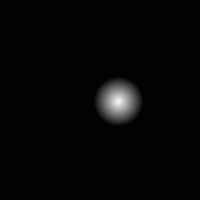 1 Hz Corrections
1 Hz Corrections
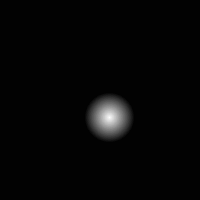 10 Hz Corrections
10 Hz Corrections
And the resulting size of the star image in a long exposure:
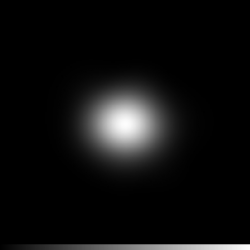 1 Hz Corrections
1 Hz Corrections
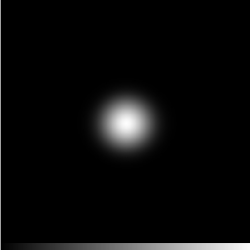 10 Hz Corrections
10 Hz Corrections
Other data gathered by Brad Wallis of JPL (Brad Wallis and Benoit Schillings developed the prototype for the original AO-7) show the the effect of rapid corrections on poor seeing. At 1 Hz the larger, slower component is reduced, but the amplitude of the jitter remains about the same:
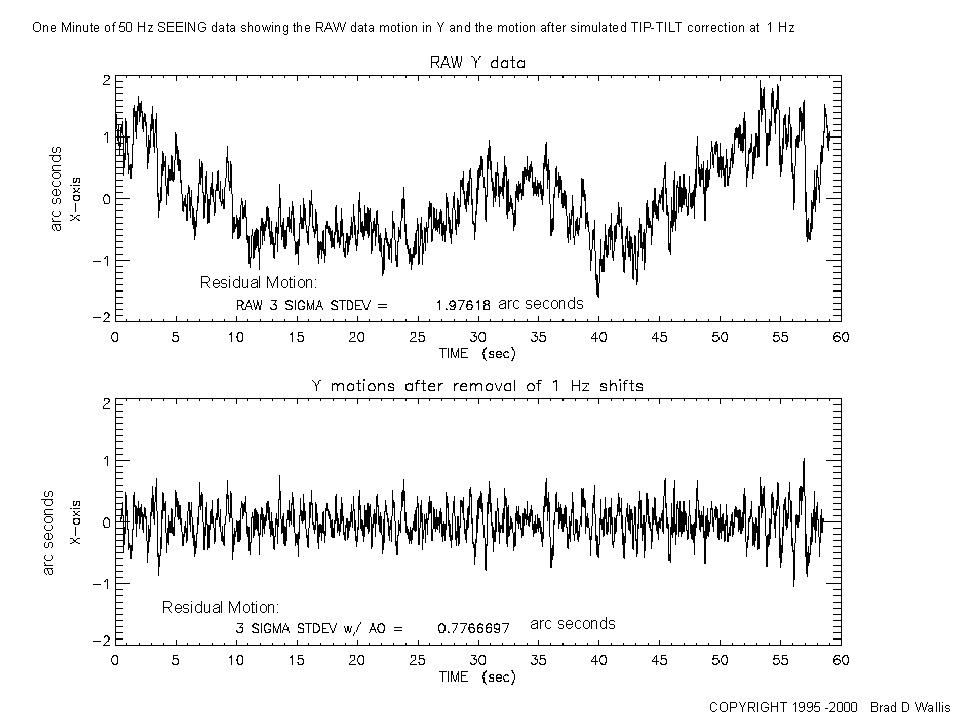
However, at a 5Hz correction rate, the faster jitter is reduced:
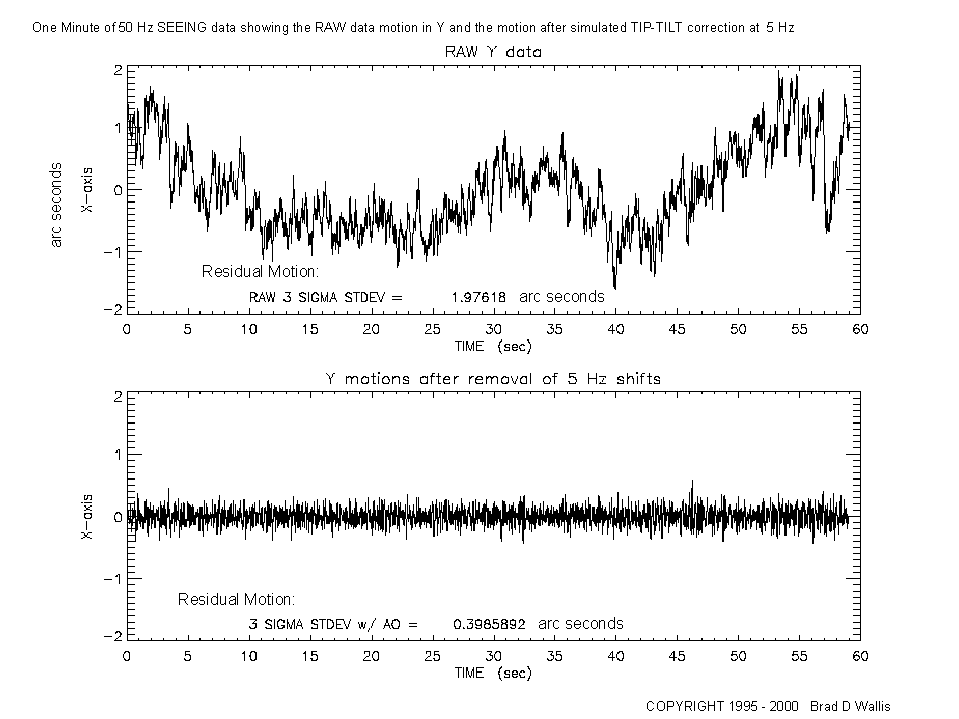
And at a 10 Hz correction rate, significant improvement is seen:
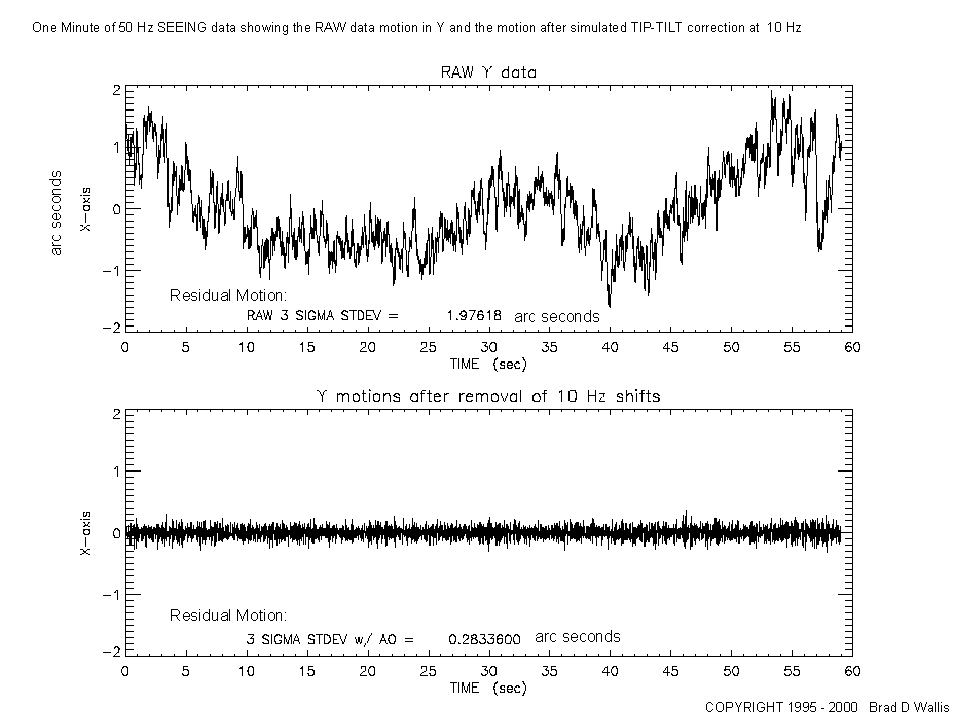
The improvement in stellar profiles can also be seen at corrections above 1 Hz. First by looking at the non-AO guided image:
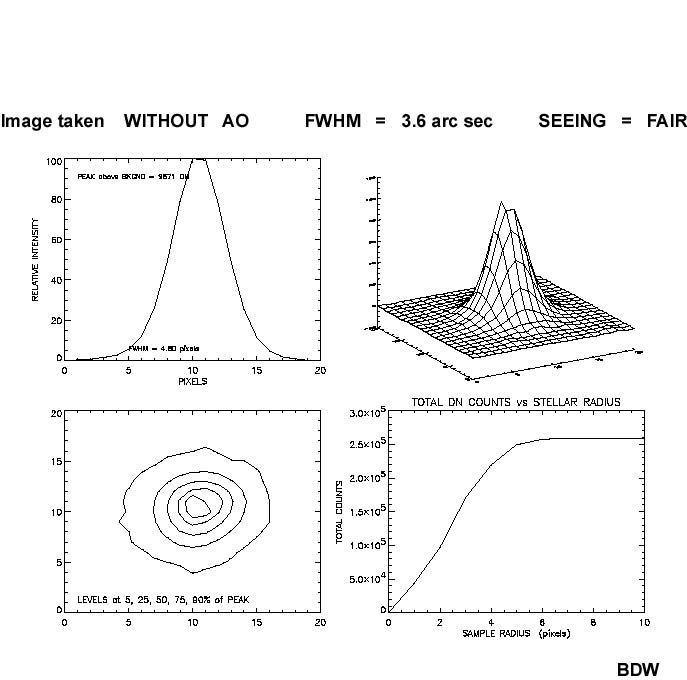
And comparing the non-AO guided image to the AO guided image there is again significant improvement in the FWHM of the star profile:
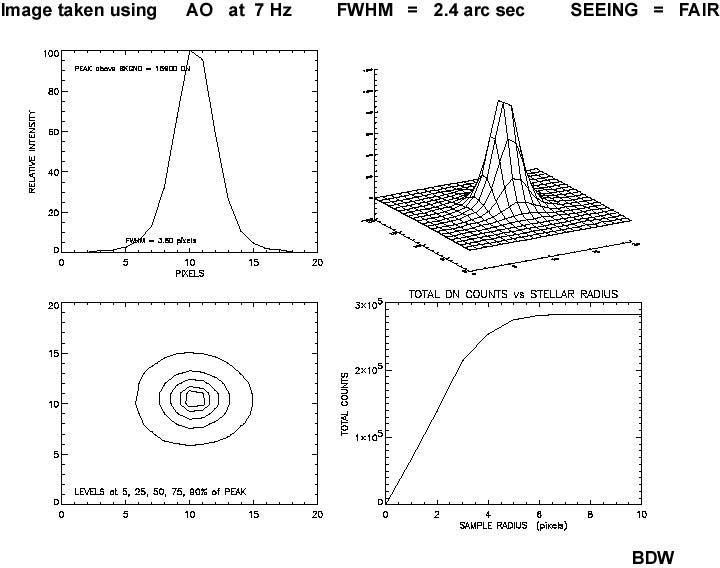
Telescope mounts cannot correct faster than about once per second. The 10Hz rate of the AO will clearly result in improved resolution under the right conditions.
SPECIFICATIONS:
| OS Compatibility |
Windows 32 and 64 bit OS, Mac |
|---|---|
| Computer Interface |
I2C |










